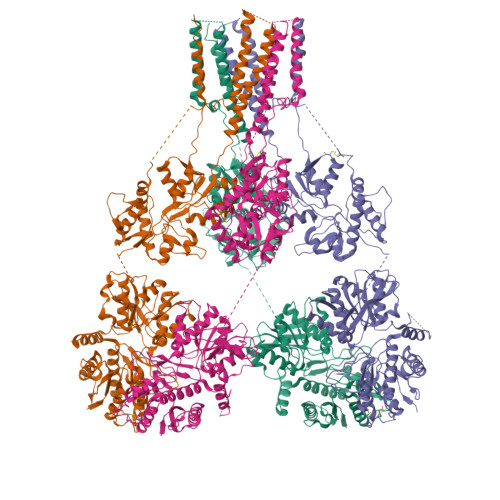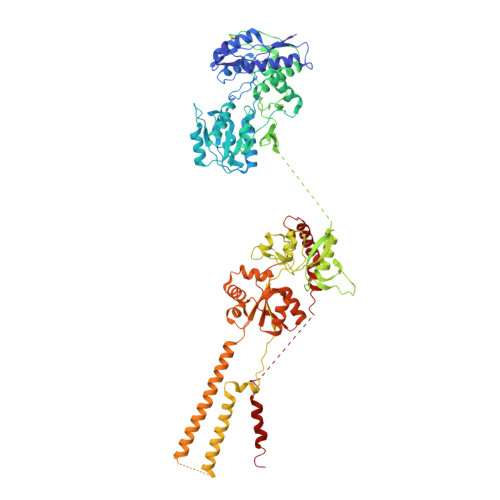Structural and Functional Insights into GluK3-kainate Receptor Desensitization and Recovery.
Kumari, J., Vinnakota, R., Kumar, J.(2019) Sci Rep 9: 10254-10254
- PubMed: 31311973
- DOI: https://doi.org/10.1038/s41598-019-46770-z
- Primary Citation of Related Structures:
6JFY, 6JFZ, 6JMV - PubMed Abstract:
GluK3-kainate receptors are atypical members of the iGluR family that reside at both the pre- and postsynapse and play a vital role in the regulation of synaptic transmission. For a better understanding of structural changes that underlie receptor functions, GluK3 receptors were trapped in desensitized and resting/closed states and structures analyzed using single particle cryo-electron microscopy. While the desensitized GluK3 has domain organization as seen earlier for another kainate receptor-GluK2, antagonist bound GluK3 trapped a resting state with only two LBD domains in dimeric arrangement necessary for receptor activation. Using structures as a guide, we show that the N-linked glycans at the interface of GluK3 ATD and LBD likely mediate inter-domain interactions and attune receptor-gating properties. The mutational analysis also identified putative N-glycan interacting residues. Our results provide a molecular framework for understanding gating properties unique to GluK3 and exploring the role of N-linked glycosylation in their modulation.
Organizational Affiliation:
Laboratory of Membrane Protein Biology, National Centre for Cell Science, NCCS Complex, S. P. Pune University, Maharashtra, Pune, 411007, India.


















